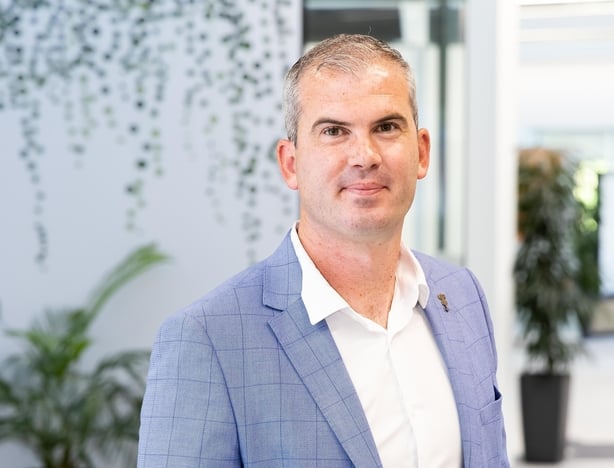Jobs
Employers be aware – job interviews are a two-way process

Employees still hold all the cards in an Irish labour market which remains in rude health.
But while employers consistently rate talent attraction and retention as top priorities for their organisations, candidates are put off by negative experiences in the recruitment process.
70% of employers have experienced employees leaving within the first year due to being a poor match for the organisation, according to recent research by Hays Ireland.
Often it is because the job didn’t meet their expectations, as outlined in the initial application phase.
Why are recruiters finding it so hard to secure the right staff for the jobs on offer?
The crux of the matter is the recruitment process itself, from application to interview to onboarding.
If you set yourself up as an employer that retains, you will never have to worry about recruitment, says HR Buddy CEO, Damien McCarthy.
“If your application process communicates well, your interview process is thorough and then you dedicate the requisite time and patience to a quality onboarding, it is one of the soundest financial strategies you will ever take as an employer, because we know how costly it is to hire and lose and hire again and lose again,” he says.
Job applications
Optimising job advertisements and the application process to communicate what’s unique and appealing about the organisation’s work culture can make all the difference.
Mr McCarthy advises using your company’s language when communicating with potential candidates right from the start.
“Your brand should be reflected throughout your communications, even in your job adverts/application forms,” he says.
“Get the dry basics in, but give jobseekers an idea of the kind of culture they’ll be working in, which helps them to decide if it’s a good fit for them. It’s better if a potential candidate can figure that out early on.”
He also highlights the importance of including the basics that are often omitted.
“Salary and flexibility are two key motivations for any jobseeker. If you are vague on the detail at application stage, you are missing key information that the candidate wants,” he explains.
Increasingly the job application process has become digitalised, with minimum human interaction. Candidates are likely to get an automated response after submitting their CV or LinkedIn profile.
Mary Connaughton, director of HR professional body CIPD Ireland, says to be successful or to stand out from the crowd, employers need to be alert to ensuring that potential candidates can find lots of information about the company as well as the job, and what it’s like to work there.
She says online videos by other employees of a similar profile to those being sought are increasingly being used.
With advances in the use of technology and AI tools in recruitment, Ms Connaughton says employers need to watch that they are building human engagement into the process, so it feels warm and inviting for candidates.
“We often hear complaints from candidates about a lack of communication, not knowing enough what will happen next, when they will hear back, and even the outcome of the process,” she says.
“Investing in this to promote a sense of warmth and a process that is candidate-centred will minimise the risk of losing people who have expressed interest in your company.”
Speed of response is also important, Ms Connaugton adds, as the application process is now so easy that the candidates an employer is targeting are also likely to apply to other organisations, and to move forward with those that respond first and in a friendly manner.
Job Interviews
Interviews offer job seekers a first-hand view of an organisation’s culture and work environment.
It is no longer just the candidate that must make a good first impression.
Job interviews are now a two-way process, with candidates evaluating the company and the people as much as interviewers are evaluating the candidate.
According to the CIPD Director, increasing numbers of candidates are asking about career and development opportunities, diversity and inclusion practices and sustainability goals.
“Employers need to be upfront with where they are at, as creating a story that will not be the lived experience of the candidate will create a very unsettled cohort of employees,” Ms Connaughton says.
The key to finding the right hire and someone who is less likely to leave is at the interview stage, according to Mr McCarthy.
“Too often, candidates confirm their qualifications and their experience to an interview panel and this opens the door to their new employment. This is not fair on both the employer and the employee,” he says.
An interview needs to break down someone’s experience and it needs to provide the candidate with a realistic and reasonable insight into what their everyday work will look like.

The HR Buddy CEO says if you have communicated this thoughtfully in your job advert and application form, it will also be much easier to achieve this.
“Neglecting to ensure that a correct fit or an alignment to your company culture is one of the biggest mistakes and when neglected there is a much larger possibility of a new-hire leaving in the first 12 months of their employment,” he says.
He recommends training of hiring managers, interview panels and/or the involvement of qualified HR professionals at interview stage.
He says ensuring that there is relevant topics and criteria for each job role is also crucially important, as vague and generic interview techniques provide for less chance of successful hires and future retention rates.
According to CIPD, more attention is going on the skills of applicants and having a mindset open to ongoing learning, rather than just on traditional school or college grades.
“This feeds into the interview process, which increasingly explores candidates’ areas of interest and motivation to learn, alongside current areas of expertise,” Ms Connaughton says.
“Many large organisations have adopted capability frameworks for different types of role, requiring interviewers to consider the whole person, their behaviours, skills, strengths, knowledge, values, motivation and interests.”
Onboarding
Despite numerous employers having onboarding policies and procedures, the onboarding experience of many candidates is weak, according to CIPD.
Many workplaces have their heart in their right place when it comes to onboarding new employees but in busy workplaces there is often not enough quality time given to settling the person into their new job.
While managers put attention on the operational job skills and systems, appropriate onboarding is a broader, more long-term process which aims to set the employee up for success by supporting them to learn about the broader organisation, ways of working and how they are expected to grow and contribute.
The HR Buddy boss says it is easier said than done, but time and patience is required with new hires.
“Many workplaces truthfully struggle with giving the required time and patience but for me it is a given that organisations must force this to be the norm with a new hire,” he says.
CIPD encourages employers to understand the employee turnover in their company.
“The cost of this, and the cost of recruitment are both significant,” says Ms Connaughton, “so investing in current employees, line managers and getting the culture right can have a big return. The employer brand is not just about attracting potential employees but meeting the growing expectations of current employees.”










